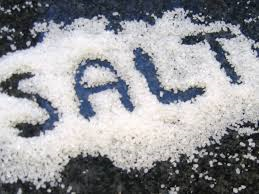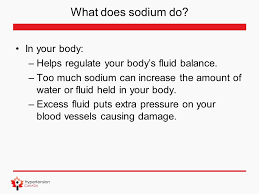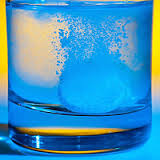The researchers, led by Jacob George, MD, senior clinical lecturer and honorary consultant in clinical pharmacology at the University of Dundee, tracked more than 1.2 million patients in the United Kingdom for more than seven years, and compared the patients taking the soluble forms of drugs, such as acetaminophen, ibuprofen, aspirin and others, to patients taking the traditional pill form. They found that the patients taking the soluble forms were at a 16 percent higher risk of heart attack or stroke, and at a 28 percent higher risk of developing high blood pressure, which researchers attributed to the high levels of sodium in these medications.
“These tablets all fizz when you put them in water,” Dr. George said. “The manufacturers use the salt to create that fizz, but it does much more harm than good.”
The dissolvable form of acetaminophen, better known as Tylenol, contained the most sodium, at 427 milligrams per dose, according to the study. If you took the maximum amount daily, you’d be getting more than 3,400mg of sodium, far more than the USDA recommended daily allowance of 2,000mg before you factor in your diet.
Soluble ibuprofen and aspirin contained far less sodium, with 202mg and 149mg per pill respectively, according to the study, but George said the levels are still far from acceptable.
“There’s no legal regulation anywhere in the U.S. or the UK to limit the amount of sodium per tablet,” he said. “The sodium levels in these medications should be clearly labeled on the packages.”
Diets high in sodium are linked to high blood pressure, heart attack and stroke, but many people are unaware just how much salt they get in their diet, let alone from their medication, according to the study.
Soluble acetaminophen and ibuprofen are often given by prescription and are much more common in the UK than in America, but soluble aspirin is frequently sold in U.S. drug stores under the brand Alka Seltzer, said Patrick Fratellone, MD, a New York City-based cardiologist.
“The U.S. should start looking at its soluble medications and determine whether the amount of salt in them should be allowed,” Dr. Fratellone said. “There’s no restrictions on the amount manufacturers can add.”
Merle Myerson, MD, director of the cardiovascular disease prevention and pre-exercise heart screening program at St. Luke’s and Roosevelt Hospital in New York City agreed, saying that even though salt is sometimes necessary in these medications, it’s not necessary for people to take them.
“We often tell patients that salt is hidden in foods,” Dr. Myerson said. “Processed foods and fast foods have a lot of hidden salt. Here again, we’re seeing another source of hidden salt that may contribute to a person’s risk for hypertension.”
“Salt helps make the medication more digestible and dissolve better,” she added. “But if it contains too much salt, it could add up to amounts that could be dangerous.”
These medications are typically used by people who have trouble swallowing pills, George said, but anyone who does should speak to their doctor.
“There are groups of people who legitimately need these medications, but anyone who takes them should realize the cardiovascular risk of these in the long term,” he said. “They need to speak to their physician to come to an informed decision of whether they should actually be taking them.”
Fratellone said that he recommends that patients avoid soluble medications, and added that he refuses to prescribe them.
“Patients need to avoid them,” he said. “There needs to be information on the front of the packaging telling patients how much salt in is their medicine.”
“We’re trying to get patients to reduce the amount of salt in their diet,” Fratellone added, “and manufacturers are putting it in our medication without giving us fair warning.”
Decongestants may raise your blood pressure.
People with high blood pressure should be aware that the use of decongestants may raise blood pressure or interfere with the effectiveness of some prescribed blood pressure medications. Many over-the-counter cold and flu preparations contain decongestants such as:
- Ephedrine
- Levmetamfetamine
- Naphazoline
- Oxymetazoline
- Phenylephrine
- Phenylpropanolamine
- Propylhexedrine
- Pseudoephedrine
- Synephrine
- Tetrahydrozoline
- Check the sodium content.
Some OTCs are high in sodium, which can also raise blood pressure. Look at the active and inactive ingredients lists for words like “sodium” or “soda.” Note the amount of
sodium in the medication. People with high blood pressure should consume less than 1,500 mg of sodium per day from all sources; one dose of some OTCs can contain more than a whole day’s allowance.
Those who prescribe medications may be unaware that they may contain substantial amounts of sodium. References such as package inserts, the Physicians’ Desk Reference, and Drug Information 1 do not always provide information about sodium, and the sodium content, when it does appear, may be given in various units of measurement or may need to be calculated.
Certain medications containing one or more drugs are high in sodium content regardless of the formulation used, whereas others vary according to the formulation (Sodium Content of Various Drug Products and Formulations.). High-sodium and low-sodium formulations of the same drug products should not be used interchangeably in patients who are following sodium-restricted diets.
The Food and Drug Administration (FDA) has proposed a rule for the labeling of the sodium content of over-the-counter drugs,4 and it will be working with pharmaceutical organizations to develop voluntary sodium labeling for prescription drugs. The FDA will recommend that makers of prescription drugs declare the sodium content if it exceeds 5 mg (0.22 mmol) per single recommended dose and that they issue a warning if the sodium content exceeds 140 mg (6.09 mmol) per maximal daily dose. Sodium contained in active ingredients, excipients, and any recommended diluent will be included. These measures will simplify the calculation of the total sodium content of any product prescribed for patients whose sodium intake is restricted. Until these initiatives have been implemented, this information should be obtained from the manufacturer.
References:
1.) American Heart Association
2.) The New England Journal of Medicine
3.) EverydayHealth.com


